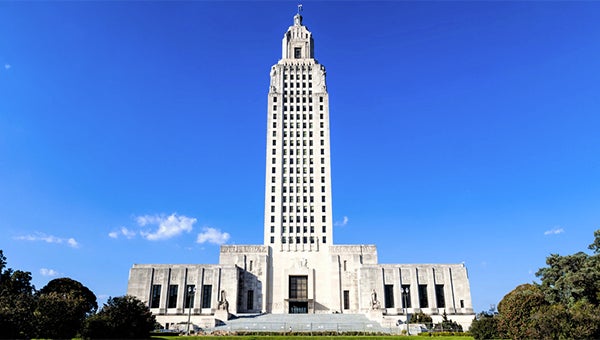Cemetery site of Monday ceremony
Published 5:03 am Wednesday, May 31, 2017

- American Legion members Bobby Latino and Paul Corse salute the flag.
Monday evening’s Memorial Day ceremony at Ponemah Cemetery was a solemn, respectful affair that included everything from a 21-gun salute to an airplane flyover.
Dr. Whit Gallaspy served as the event’s speaker, noting that the Memorial Day celebration has its roots in the post-Civil War “Decoration Day” observance. He also quoted from a Bible that was carried by his great-great grandfather James Powell during the Civil War, his uncle in World War I in France, and in Gallaspy’s own most recent trip to Afghanistan.
Gallaspy noted that over 700,000 Americans died during the Civil War, which was 2 percent of the U.S. population at the time. He pointed out that a similar proportion today would be 7 million.
“I cannot imagine the tragedy, the grief that would spread over our land if America were in a conflict today in which we lost 7 million people,” he said.
Gallaspy’s talk focused on two noteworthy dates — May 12, 1865, and Jan. 6, 2005. Gallaspy said the 1865 date was important because it was the death of Private John J. Williams of Indiana, who is historically considered the final casualty of the Civil War. Williams died in the Battle of Palmito Ranch in Texas, which actually took place after the war ended in April of 1865. Williams is buried in the Alexandria National Cemetery in Pineville.
“I love to go through the national cemetery whenever I am in Pineville,” he said. “Private Williams is located on plot 797, and I always be sure to go by and check on him.”
He focused on the 2005 date because it was an incident where seven soldiers from Gallaspy’s National Guard unit were killed in battle in the Middle East. He noted that this particular unit was made up of members of the state’s Louisiana Tigers as well as the Fighting 69th of New York City.
Gallaspy pointed out that the Louisiana Tigers and Fighting 69th were both involved in many Civil War battles, and fought on opposite sides. But in 2005, they were united for one cause and under one banner — the Stars and Stripes.
“We concluded that now that the two units were together, training at Fort Hood and ultimately destined to serve in combat in Iraq, that perhaps we could declare the American Civil War over,” said Gallaspy, detailing the training his unit underwent in 2004 before they were deployed in October of that year.
Gallaspy returned to Louisiana in January of 2005, when he later heard the news of the IED attack that killed seven of his comrades.
“Of course this news was overwhelming and very saddening,” he said. “I thought back on my very first meeting with the Fighting 69th in March of 2004, and how we had proclaimed the American Civil War over. I realized that for me, Jan. 6, 2005, had become an even more important date.
“Because while I had seen the soldiers, from these two historic units that were once bitter enemies, train and serve together in Iraq, for the first time we had a situation where they had died together — side by side, shoulder to shoulder, elbow to elbow.”
Gallaspy said that the combined spilled blood of the two former enemy units also reminded him of Jesus Christ’s sacrifice of blood for his people.
“I believe that God was with those families as they suffered that day,” he said. “Because brothers and sisters, who more than our Heavenly Father can know the loss of a loved one in a tragic death? I also believe God stood with their ancestral comrades, as the great infantryman — his very own Son, Jesus Christ — marched them through the gates of heaven, at perfect cadence.
“Today, our parish, our community is united in our respect and our love for these fallen heroes.”
The ceremony also included the presentation of the colors by members of the Bogalusa High School Jr. ROTC, and the placing of memorial wreaths by members of local veterans organizations. Children from local schools placed poppies on the veterans’ graves at Ponemah, and the ceremony concluded with a 21-gun salute and the playing of Taps by members of the American Legion Post 21.
Near the end of the ceremony, John Gallaspy led a ceremonial reading of the World War I poem, “In Flanders Fields.”





